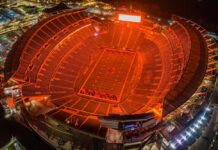Using the James Webb Space Telescope, an unexpected celestial discovery was made by astronauts: they saw a strange glow around a star that had failed.
On Tuesday, NASA stated that a team of astronomers had detected infrared emissions from methane around a brown dwarf. Similar to Earth’s auroras, these emissions are believed to be caused by energy in the dwarf’s upper atmosphere. However, no established means of generating that kind of power exists.
Since brown dwarfs are more prominent than Jupiter and other giant planets but too small to produce the nuclear fusion necessary to fuel stars, NASA refers to them as failed stars.
W1935, the one found lately by Faherty’s team, is chilly because it is far from any obvious heat sources, such as stars. Another brown dwarf with almost the same composition and similar essential traits was also discovered. The researchers’ predictions about the brown dwarf’s atmosphere cooling with altitude were correct.
However, the fact that W1935, 47 light-years away from Earth, warmed up at greater altitudes baffled Faherty’s team.
Jupiter and Saturn exhibit aurorae; thus, the researchers sought to learn more about them. They speculated that W1935’s heat may come from interior processes similar to those on Jupiter and Saturn. Some have proposed that the particles originate from an active moon in the vicinity or perhaps interstellar plasma.
According to NASA, charged particle collisions in Earth’s upper atmosphere create flashes of light and heat, known as aurorae. This phenomenon may happen in either the northern or southern hemispheres. Although astronomers have previously hypothesized that auroral activity is the most probable cause of radio emissions from warmer brown dwarfs, NASA has announced that W1935 is the first extrasolar auroral candidate outside our solar system to exhibit the hallmark of methane emission.
Although it began operations in December 2021, the JWST needed another six months to reach full operational capability before it could provide views of the expansive cosmos. The scientists, including Faherty and her colleagues, have seen heavenly objects with “exquisite detail” thanks to the $10 billion instrument, as shown by the examination of the brown dwarfs, according to NASA.














